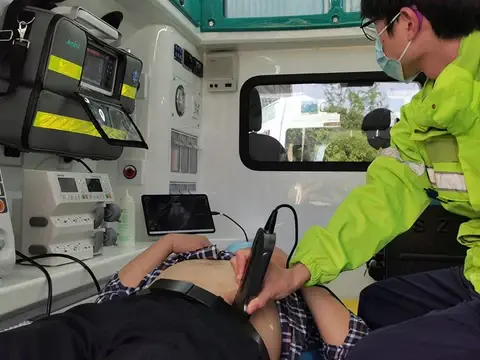Beyond the X-Ray Room: Celebrating Hidden Rad Techs and Sonographers
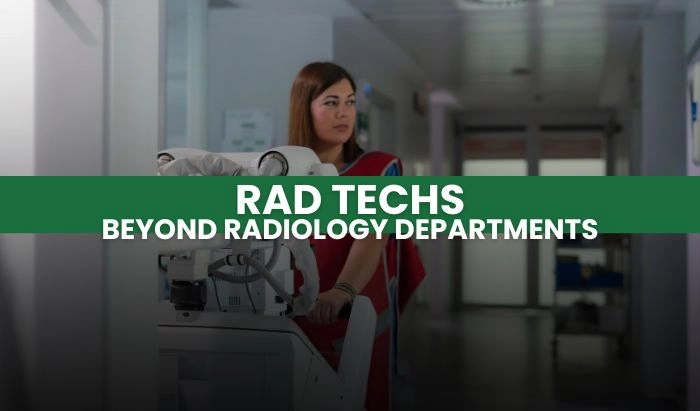
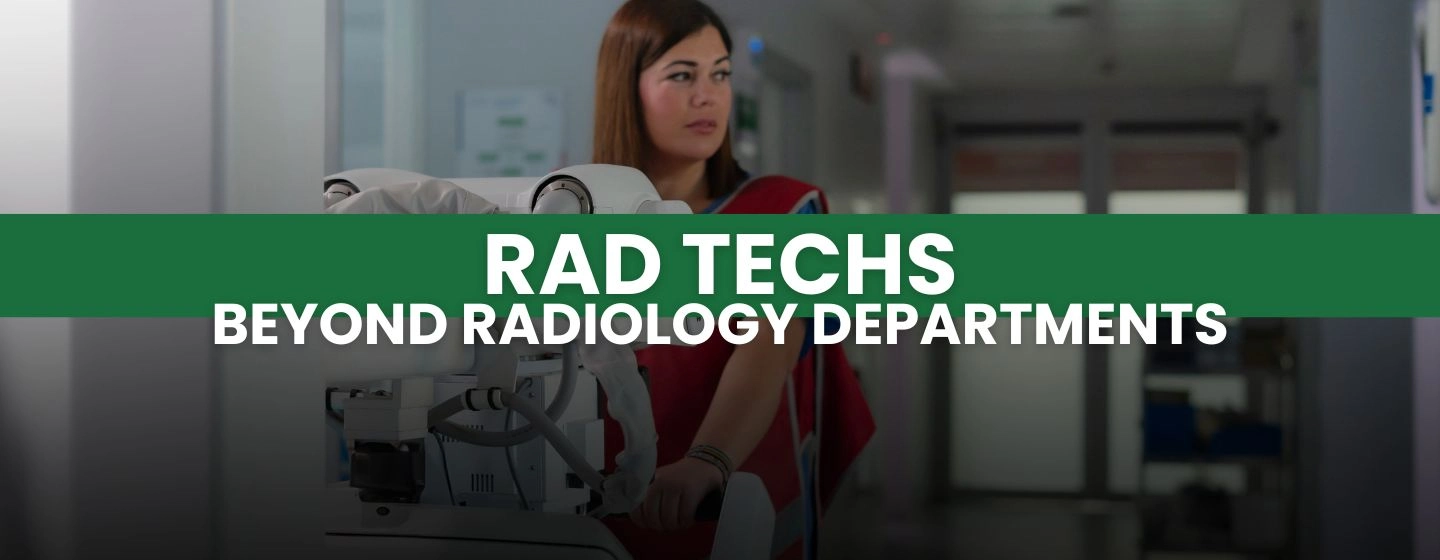

- Introduction: More Than Just the Imaging Department
- In the OR: Precision Under Pressure
- In the ER: Speed Meets Sensitivity
- In the Cath Lab: The Right-Hand Image-Maker
- On the Road: Mobile Imaging Warriors
- In the Vet Clinic: Translating Skills Across Species
- Even More Hidden Roles: Where Tech Meets Talent
- Why This Matters: Gratitude for the Hidden Ones
- References
Introduction: More Than Just the Imaging Department
When most people think of radiologic technologists or sonographers, they picture a busy imaging suite, a humming CT scanner, a loud MRI, or a dark ultrasound room. However, many of us know the real story: some of the most critical imaging work happens far from the radiology department, often under pressure, on the fly, and with little recognition.
We’re talking about the hidden rad techs. The ones who trade scrub pants for lead aprons in the operating room (OR), who sprint down ER corridors with portable units in tow, who stand shoulder-to-shoulder with interventionalists in the Cath lab, or travel miles in all directions with mobile radiology vans. Some even serve behind the scenes in veterinary clinics, bringing their expertise to furry (and feisty) patients.
These rad techs and sonographers are the glue that quietly holds the diagnostic workflow together, wherever that workflow may be.
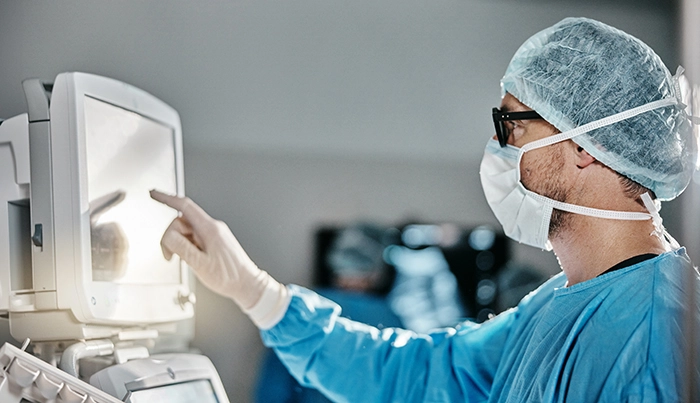
In the OR: Precision Under Pressure
Ask any rad tech who’s done fluoroscopy in the OR: it’s not for the faint of heart. Between orthopedic surgeons shouting instructions, tight sterile fields, and high-stakes timing, the environment demands sharp technical skills and even sharper intuition. A single C-arm image can mean the difference between perfect screw placement and a post-op nightmare.
Yet despite the chaos, OR techs consistently deliver crisp images without interrupting the flow of a surgery. That’s not just a skill. It’s an art.
From spinal fusions to vascular grafts, OR rad techs are trusted partners in procedures where millimeters matter. They’re responsible not just for positioning the imaging equipment but for understanding the surgical sequence, anticipating the next image before it’s requested. In orthopedic trauma cases, they might capture real-time images as hardware is placed, ensuring alignment and depth are spot-on. During neuro procedures, they provide continuous visualization under sterile drapes, often navigating limited visibility and constrained space.
In hybrid ORs and minimally invasive surgeries, rad techs operate advanced fluoroscopy units and 3D imaging systems that integrate with surgical robotics and navigation platforms. They’re not just technologists, they’re intraoperative imaging experts who know how to adapt under pressure and play a key role in surgical outcomes.
Examples of these surgeries include:
- Cardiovascular interventions like TAVR and endovascular aneurysm repair
- Orthopedic and spine surgeries using robotic navigation and 3D imaging
- Neurosurgical procedures such as tumor resections and stroke interventions
- Minimally invasive abdominal surgeries with robotic or laparoscopic guidance

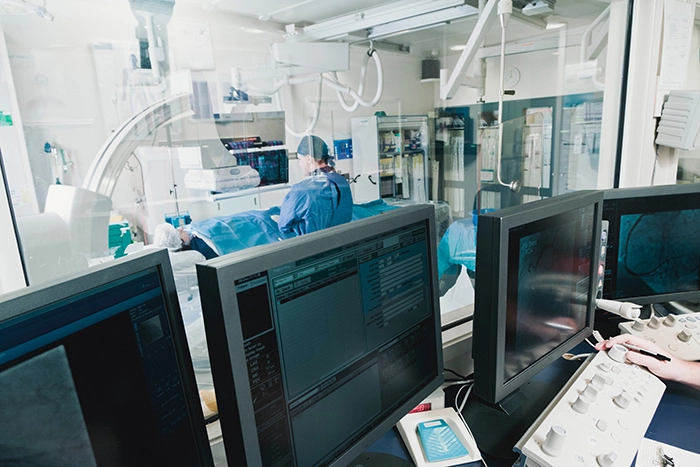
In the ER: Speed Meets Sensitivity
Whether it’s a trauma alert at 2 a.m. or a stroke protocol patient who can’t speak, ER imaging is about more than just hitting “expose.” It’s about being present in the moment, reading the room, adapting to complex patients, and capturing diagnostic-quality images when every second matters.
If you’ve ever ducked flying emergency equipment, navigated through an emergency intubation, or imaged through a backboard and collar, this one’s for you.
ER rad techs are often among the first to interact with patients in critical condition. They work shoulder-to-shoulder with trauma surgeons, emergency physicians, and nurses in a high-stakes environment where speed must be balanced with precision. From rapid chest X-rays for suspected pneumothorax to pelvis images in blunt force trauma, they know how to get the shot fast, without compromising quality or safety.
They’re experts in non-verbal communication, adapting positioning techniques for patients who are unconscious, combative, or in too much pain to move. In stroke response teams, they may be the first to image a brain bleed or blockage, triggering a cascade of time-sensitive interventions. In pediatric codes or mass casualty scenarios, they maintain calm under chaos, ensuring the imaging is never a barrier to care, but a bridge to it.
In the Cath Lab: The Right-Hand Image-Maker
In the cardiac Cath lab, the rad tech is often a hybrid professional: part radiographer, part scrub tech, part circulator, and full-time team player. From positioning the C-arm mid-procedure to ensuring radiation safety for the team, Cath lab techs are essential to cardiac care.
They don’t just take images, they make interventions possible.

Cath lab techs work at the intersection of imaging and interventional cardiology. They’re the ones capturing live fluoroscopic guidance as catheters thread through vessels, balloons dilate arteries, and stents are deployed with millimeter precision. While the cardiologist focuses on the lesion or blockage, the tech is managing contrast injections, optimizing angles, and adjusting exposure settings, maintaining radiation safety protocols for a surgical team, all while monitoring patient vitals and minimizing dose.
In emergent STEMI (ST-elevation myocardial infarction) cases, they move with urgency and composure, helping shave minutes off door-to-balloon times. Outside of coronary interventions, they assist with pacemaker placements, electrophysiology studies, structural heart procedures, and even hybrid endovascular surgeries.
Radiologic technologists in the Cath lab are more than button-pushers; they’re deeply embedded interventional team members who understand anatomy, anticipate needs, and contribute directly to life-saving care in real time.
On the Road: Mobile Imaging Warriors
Mobile radiology and sonography teams are changing the game for nursing homes, rural areas, and underserved communities. These rad techs pack, drive, unload, scan, and transmit, all while managing unpredictable environments and limited space. They do it with a smile and without the tech support most hospitals take for granted.
Imaging in a living room? Done. Chest X-ray in a nursing facility hallway? Handled. These techs keep patients out of the hospital and bring care to where it’s needed most.
In the Vet Clinic: Translating Skills Across Species
Some rad techs find their calling in the veterinary world. And yes, it’s a wild ride. Sonographers and radiographers in vet clinics work with animals. Their patients can’t follow breath-hold instructions or explain where it hurts. They need twice the patience and triple the creativity.
But their work is just as diagnostic and just as vital, proving that imaging expertise transcends species.
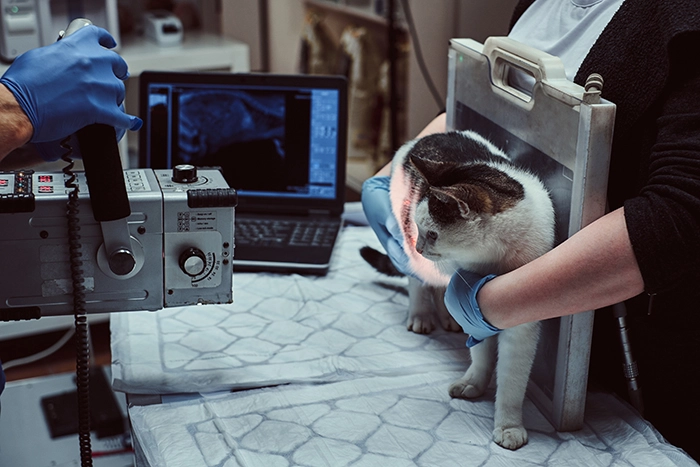
Looking for Veterinary imaging courses? Visit our VET CE store to learn more.
Even More Hidden Roles: Where Tech Meets Talent
Beyond the OR, ER, and mobile units, there’s an entire ecosystem of rad techs and sonographers making an impact in unexpected places:
- ICU Bedside Imaging: Providing portable chest X-rays and point-of-care ultrasound (POCUS) for ventilated or critically ill patients, often in tight, high-risk environments.
- Flight and Transport Teams: Joining air or ground critical care units with portable ultrasound systems to assist during in-transit trauma or cardiac assessments.
- OB/GYN and Women’s Health Clinics: Sonographers in external OB practices, fertility centers, and gynecology offices provide compassionate, skilled care during some of the most intimate and emotionally sensitive moments. from early pregnancy assessments to monitoring complex reproductive health conditions.
- Dental Clinics and Labs: Radiologic technologists and dental imaging specialists play a crucial role in oral health diagnostics, capturing precise panoramic X-rays, cone beam CT (CBCT), and intraoral imaging to assist in everything from routine dental care to complex surgical planning and orthodontics.
- Research and Clinical Trials: Capturing high-quality, protocol-specific imaging in research hospitals or pharmaceutical studies, where precision ensures progress.
- Radiation Safety Officers (RSOs): Ensuring radiation protection protocols are followed in hospitals, outpatient clinics, industrial settings, and even airports, RSOs are essential to regulatory compliance and staff/patient safety. They oversee dose monitoring, safety training, equipment inspections, and help organizations maintain safe environments wherever ionizing radiation is used.
- Education, Application Specialists & Simulation Labs: Training the next generation in academic programs, simulation centers, and clinical sites, these radiologic technologists play a pivotal role in shaping the future of imaging. Whether guiding students through foundational skills or supporting experienced techs in mastering new technologies, they ensure that learning evolves alongside innovation.
- PACS and Imaging Informatics: Working behind the monitor in PACS administration, QA, and IT roles, optimizing workflows, and ensuring every image meets clinical and regulatory standards.
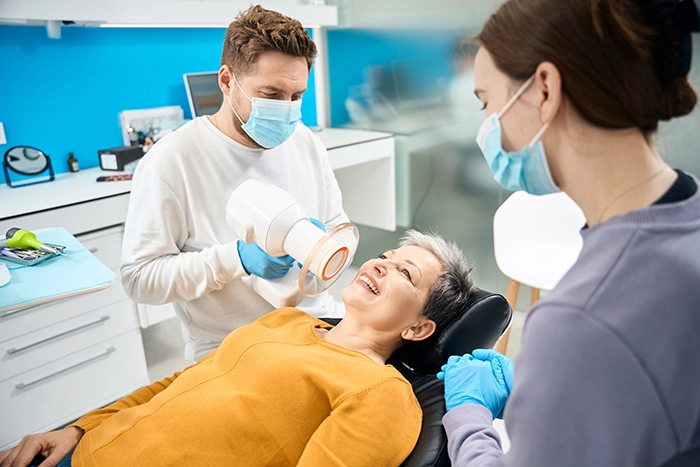

Looking for Radiation Protection courses? Visit our Radiation Safety CE Store to learn more.
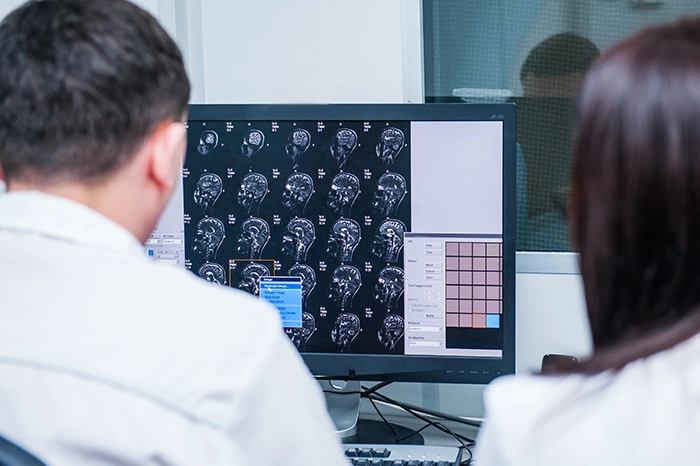
These professionals may not be in the spotlight, but their expertise powers modern medicine in every corner of the system.
Why This Matters: Gratitude for the Hidden Ones
So why spotlight these roles? Because it’s time.
It’s time to say thank you to the radiologic technologist who quietly preps the fluoroscopy tower before a spine case. To the sonographer who gets a solid apical four-chamber on a crashing ICU patient. To the mobile tech who wheels a DR panel through snow to image a bedridden patient in rural America.
You are not just button-pushers or ghost operators. You are clinical experts, patient advocates, and essential healthcare providers. You are the heartbeat of diagnostic medicine, no matter what hallway, OR, or parking lot you’re working in today.
To every hidden rad tech and sonographer out there: We see you. We thank you. And we’re proud to stand with you.
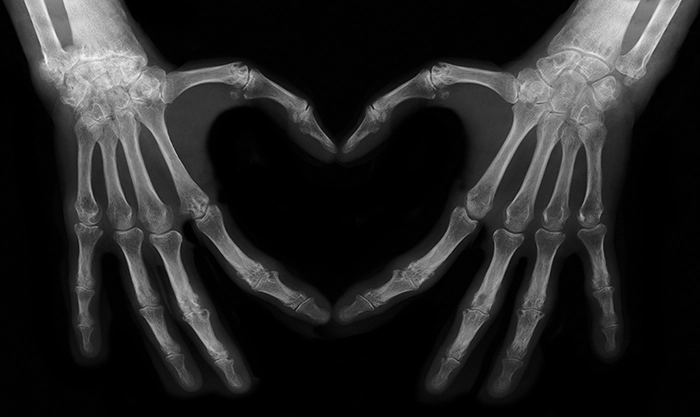
References:
-
In the ER: Speed Meets Sensitivity
In emergency departments, radiologic technologists are integral to trauma teams, providing rapid imaging that aids in the immediate assessment and management of injuries. PMC -
On the Road: Mobile Imaging Warriors
Mobile radiography services in nursing homes have been shown to reduce hospital admissions and improve patient care, highlighting the importance of rad techs in community settings. PMC -
In the Vet Clinic: Translating Skills Across Species
Veterinary radiology technicians perform advanced diagnostic imaging on animals, demonstrating the versatility and adaptability of rad tech skills across species. Vet Tech Colleges -
Dental Clinics and Labs
Dental radiologic technologists are responsible for capturing precise dental images, including panoramic X-rays and cone beam CT scans, essential for accurate diagnosis and treatment planning. nj.gov/dental -
Education, Application Specialists & Simulation Labs
Simulation-based education is a highly effective tool for training medical radiation students, allowing them to develop clinical skills in a controlled environment. PMC+1ePublications+1

